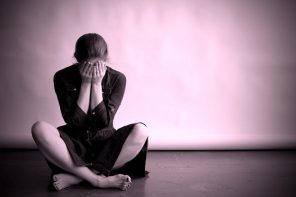Amid the clamor to figure out who Pope Francis might be, observers never failed to mention that he is the first Jesuit pope. But what does that really tell us and, more importantly, as his decisions begin to come down the pipeline (as here, for example, regarding the LCWR), what is most important to know about his Jesuit worldview?
Soon after Bergoglio’s appearance as the new pope, James Martin, S.J., made an intriguing comment: “Since his election Wednesday, I have heard at least a dozen Jesuits say, ‘Well, I don’t know much about him, but I know he made the Exercises.’” In fact, as I’ve noted elsewhere, Bergoglio made the full thirty-day version of this 16th-century meditative practice at least twice, and has repeated the shorter, eight-day version every year since he entered the Society of Jesus in 1958.
Yet self-fashioning in the Jesuit mode is not the historically-bound system that “16th-century meditative practice” might imply. Rather, the Ignatian Exercises are philosophical, a Catholic interpretation of the ancient imperative to “know thyself.”
To consider this, we need to think beyond “philosophy” as the college major most likely to cause panic in tuition-paying parents (“What are you going to do with that?”) toward a more expansive notion of philosophy as a practice. As historian Pierre Hadot points out, philosophy in the ancient world was not so much a system or code as “a way of being.” Philosophy, in this sense, is enmeshed in a life-world.
Writers from Marcus Aurelius to Francis Bacon to Ralph Waldo Emerson have conducted such experiments in living as spiritual exercise, a task that entailed writing as philosophic engagement. Philosophy in this mode, Hadot explains, is a continuous process, to be renewed in each instant—a practice that not only extends toward lofty ideas, but also orients itself toward the ordinary, the common, the everyday.
But surely Hadot wasn’t talking about Catholicism? And yet the renowned historian, no fan of Catholic ritual life, characterized the Jesuit Exercises as “nothing but a Christian version of a Greco-Roman tradition.” Both share an emphasis on instructions in the “art of living” tied to a process of understanding of one’s place in the cosmic whole. The emphasis is less on perfect knowledge than on understanding one’s place on a path toward perfection.
Like Emerson, the Jesuits ask, Where do we find ourselves?
“In Christ” is the theological answer. But there is still the matter of finding Jesus, of coming to discern God’s will. Structured as meditations on the life, passion, death, and resurrection of Christ, the Spiritual Exercises demand that every Jesuit imaginatively engage with Christ, surely to become better acquainted with the god-man, but also to know himself more intimately. Following the opening lines of Ignatius of Loyola’s guide, the purpose of undertaking this rigorous self-evaluation was “To overcome oneself and to order one’s life without reaching a decision through some disordered affection.”
Yet a sense of self must be forged before it can be overcome. Each time a Jesuit makes the Exercises, he is compelled to reflect upon the phases of his life, asking, Who was I then? Where am I now? What have I done for Christ, what ought I do for Christ now?
The Jesuit takes up the philosophical task of becoming intimate with an experience of the ordinary as itself a call to something higher, he leans toward a transformation, each according to his own nature. Although rooted in the ancient past, these meditative techniques insist upon ongoing engagement with today, with the present moment.
Bergoglio, now Francis, has been asked to narrate his sense of self, to attempt to bring unity to his memories of the past, his projected future, and the embodied sense of living through time, in a “now.” Each phrase—who, where, what, and what now?—demands a serious response, leading to a highly focused narrative account of one’s life.
This storytelling is what one critic has termed an advanced literary exercise, a “re-editing” of the self in which one narrative, a life to come, was traced over another, a life already lived. Yes, this is literary drama. Yet what we have in the Spiritual Exercises is a textual practice minus the page: it is the individual life that forms the plot in question, to be read and edited; places that require improvement are to be marked; and the text re-read, a small dot made here, a nota bene there—and this process to be repeated again and again.
The Exercises demand that the Jesuit remain attentive to the way in which the components of this narrative can change, thus demanding a reconfiguration of the plot. Further, a Jesuit like Bergoglio has become well acquainted with key protagonists in the narrative: his own flaws, or sins.
Accidents happen in this life of reiterative mediation. As Bergoglio himself stated in the days leading up the conclave,
“It’s true that when you get out into the street, as happens to every man and woman, there can be accidents. However, if the church remainsclosed in on itself, self-referential, it gets old. Between a church that suffers accidents in the street, and a church that’s sick because it’s self-referential, I have no doubts about preferring the former.”
Roland Barthes, iconic literary theorist, observed that the Spiritual Exercises actually serve to keep the exercitant in a state of suspense, as he is an actor in a narrative “whose elements are gradually being given him.” While it is God’s will to be discerned, the practitioner of the Exercises never knows exactly how that might occur. In fact, the directives in the Spiritual Exercises make clear that the Jesuit must make himself entirely indifferent to what might happen, adopting an attitude of blind anticipation—even when repeating the retreat experience for a second, third, or, in Bergoglio’s case, possibly the fiftieth time.
This might be how we ought to evaluate Francis: an actor drawn toward an unknown or partially realized conclusion. The drama vitally concerns him, yet it is not a drama of his own making.
While this is true for all of us, we do not always pay attention to the unfolding of life in this manner. But this is the very nature of Jesuit life, to remain attuned to the lights and shadows, the fleeting moments of spiritual consolation to be fleshed out through action, attentive to the “what now?” of an ever-changing world. The Jesuit chases glimmers of spiritual consolation wherever it might take him and in the process grasps a “self” that, in the Jesuit mode, will always slip through his fingers.
I observe Pope Francis’ mobility in the world in philosophical terms as “Zarathustrian.” He seems, as did Nietzsche’s Zarathustra, to follow a logic of the foot: “My heels twitched, then my toes hearkened to understand you and rose, for the dancer has his ear in his toes.” He is not groping blindly, but appears to be open to discerning signs of what he interprets as God’s will for him through his engagement with the world and, most profoundly, with the people around him.
We remain attuned to the emergence of Francis. Yet note that I have deliberately avoided any assertion that ethical self-fashioning leads to a specific brand of political hopes—liberal or conservative. The Leadership Conference of Women Religious are now well aware that Pope Francis’ “what now?” for women religious may be answered with the “same old” of his predecessor, if we can take Archbishop Mueller’s word as official.
There will be no single way to pin down this Jesuit pope. Instead, what I have provided is a key for pope-watchers on all sides of the political spectrum to read the style, the attitude, the “how” of Francis’ papacy. As this Jesuit’s sense of self in the world continues to unfold, it will be critical for anyone who wishes to engage the man to be attuned to the processes through which he has come to know himself. Understanding these terms might well provide a source from which persuasive power can be drawn.
The specifics of the conversation that took place behind Vatican walls (which were described by the LCWR as “open and frank”) are not yet available to us, but perhaps America’s women religious should encourage Pope Francis to take a walk out into the streets with them in the hope that his twitching toes can step toward healing what ails this self-referential Church.




